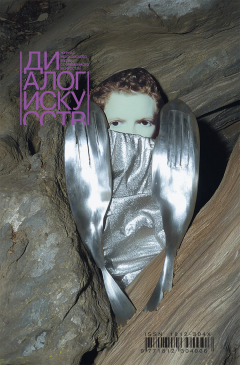Znaida Pronchenko: Jan, the public who knows and admires the artist Jan Fabre and your regular spectators are two completely different audiences. How can contemporary art lovers familiarize themselves with your theatrical universe?
Jan Fabre: Firstly, I have three different roles, those of an artist, a writer and a director. I work with several cross-cutting themes, for example, time. Secondly, remember the Hermitage exhibition, it was designed as a drama; there was a narrative understandable to theater-goers. And vice versa, I often use contemporary art tools for staging plays. In addition, I am an artist of “consilience”, an adept of Edward Wilson’s theory. He wrote a book about consilience titled Consilience: The Unity of Knowledge. For example, the bodily-kinesthetic modality of human intelligence is similar to that of ants. His thorough comparative analysis will provide you with new knowledge, a new perspective on nature, man and ants. I make art in a similar way. The creative fields in which I work cross-fertilize each other. My goal is to combine theater and the visual arts–two media with absolutely different histories and principles.
ZP: The protagonist of Mount Olympus is time. Tell us about your vision of contemporaneity and your attitude to it.
JF: I am a man of the Middle Ages. I'm not an egoist concerned with how people spend their “private time”. I can spare my life for the sake of art. After all, look at how the theater works in Europe today. Plays are rehearsed; they premiere and are toured–the Gestalt is complete. Next! I cannot work like this. Art cannot be produced according to a schedule or at a cer- tain price rate; it cannot last only for a theatrical season. My plays are not a response to a transient interest in the beautiful, caused by all-consuming boredom. In contemporary context, my understanding of time and how one should manage it is worth almost a political statement. By immersing myself in my work, not keeping track of time, I deny both the existence and importance of the factitious circus of mediocrity called contemporaneity. And one more thing, physically experiencing time, getting old and even dying during the preparation of the play, I expect the same from the viewer. The duration of the play “Mount Olympus”, in terms of both actual time and its value, is equal to 24 hours of the life of those watching the action on the stage. My work, both in art and theater, is prepara- tion for death. Each sigh and gesture is a happening, the intensity of which influences the quality of the final piece, which is death.
The people that come to watch our production are equipped like pilgrims in Lourdes–they have their backpacks and provisions. A miracle happens to those who wait for it, are ready for it and believe in it. This kind of theater is beautiful. It is alive, flowing and changing before our eyes, with people feeling the breath of art on their cheeks. This is something different from sitting in front of the computer watching a TV series’ hundredth season’s hundredth episode.
ZP: What do you think about classic pro- ductions, for example, Three Sisters, staged according to the Stanislavsky system,–is it interesting?
JF: It is great that Russia has a repertory theater. There is no avant-garde without tradition. The problem is not in Stanislavsky’s system, but in its contem- porary interpretations. There is a growing tendency of classic theaters to invite trendy directors to interpret Chekhov or Marivaux. This is something I hate most in life–labored, senseless speculations about classic plays. Either you make something of your own creation or you keep the old order. Everything in the middle is abhorrent to me. For me, a play “staged with only chairs” and the “psychological analysis of characters” is better than so-called “collages of the past and the present”.
ZP: In your new book, you argue that the artist needs a lifetime to become young. What do you mean?
JF: It is very simple. My first exhibition took place in the Stedelijk Museum, in the Barnett Newman Hall. I would look at his canvas Red, Yellow and Green and ask myself, “What can I counterpose to this?” I was paralyzed by fear. Over the years, although you may not overcome self- doubt, you learn to give vent to your creative ambitions. There is less and less time, and you should live each day like it is your last, trying to create something really great. Talent has finally found a loyal ally–courage.
DI# 5-2018




